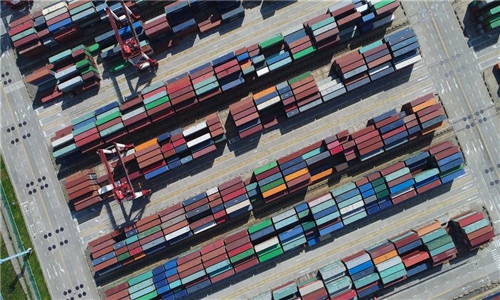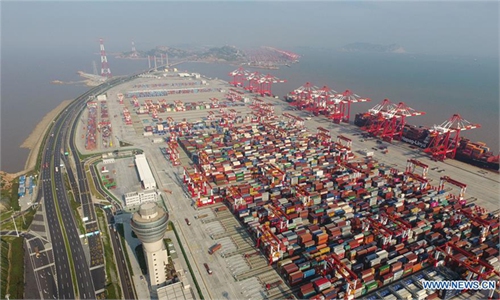
A container wharf of Yangshan Port in Shanghai (Xinhua/Ding Ting)
While countries continue to gripe about containers shortage amid the global pandemic, the world's largest Shanghai port announced on Tuesday the launch of a new empty container transportation center as part of its effort to ease the container shortage by accelerating the turnover of empty containers at port.Caused by US port congestion, trade imbalance and logistic hurdle, container shortage has become a growing headache for shippers, casting shadow over global supply chains when many much-needed products from Chinese factories are at risks of not being able to deliver to clients in the US and Europe.
The opening of the Shanghai Port empty container transportation center for Northeast Asian region, located at Yangshan Special Comprehensive Bonded Zone in Shanghai, is to provide maintenance services for empty containers and accelerate the turnover efficiency of empty containers in the port, media reports.
The new center was launched by the Shanghai International Port (Group) Co (SIPG) and a group of world shipping conglomerates including Maersk, CMA and Mediterranean Shipping Company.
Gu Jinshan, Chairman of Shanghai International Port (Group) Co, pledged to deepen strategic cooperation with shipping companies to address the seasonal container shortage due to the imbalance on import and export containers, the Paper reported on Tuesday.
The shortage of empty containers in China's major ports was recorded at 1.4 percent in June, down 12.2 percentage points from the beginning of the year, indicating that the shortage of empty containers is now effectively alleviated.
Industry insiders said that the opening will help ease container supply crunch especially in Asia, when the continued congestion at North American ports amid an approaching peak season may slow the flow of empty containers back to Asia, and potentially worsen container shortage in the region.

